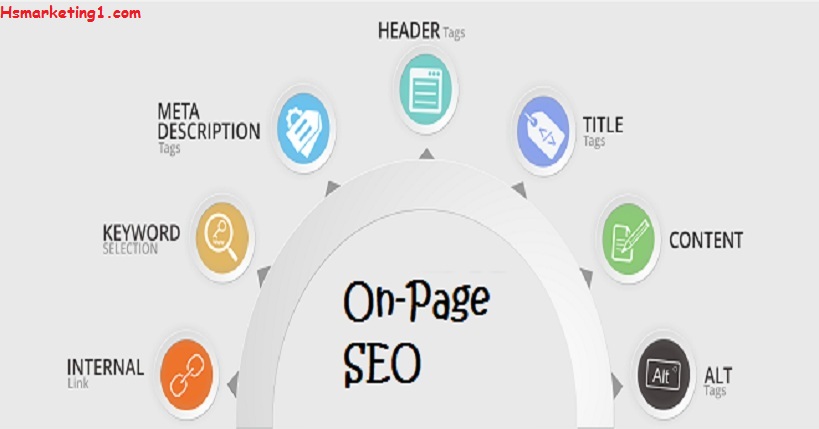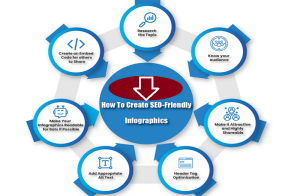
July 30, 2023, 1 Comment
Exclusive Factors For On-Page SEO You Should Know In 2023
On-page SEO is the act of modifying a page’s content, tags, and internal links to increase search exposure. In the ever-evolving world of digital marketing. On-page SEO remains a crucial part of improving your website’s search visibility. By fine-tuning a page’s content, tags and internal links. You can maximize its potential for higher rankings on search engine results pages. Just like the never-ending challenge of competition SEO requires constant attention and adaptation.
There is no moment of final victory for us. As Google’s algorithm and competitor content are continually changing. To stay on top you must remain vigilant. Adapt these changes to maintain and improve your search rankings. Understanding the 10 exclusive factors for on-page SEO in 2023 is essential for your website’s success and continued growth in the competitive digital landscape. But first, it’s vital to have a broad understanding of how Google and other search engines operate.
Basics Of Search Engines
Search engines use crawlers or spiders to navigate the vast expanse of the internet. Following links from one site to another and creating a search index is essentially a map of web content. The crawlers assess the content they encounter to understand its nature and relevance. This valuable data is fed into the search engine’s algorithm. Which determines how well a particular site’s content addresses user queries. Higher rankings on the search engine results page (SERP) are granted to pages that excel in providing relevant and helpful information.
However, Google’s search engine algorithms are continually evolving to enhance the user experience. Stay website optimization to maintain or improve search visibility because rankings fluctuate. Staying updated and adapting your on-page SEO tactics becomes imperative in this dynamic landscape. To ensure your website ranks higher and offers the best possible answers to users’ search queries.
Why is on-page SEO important?
On-page SEO, also known as on-site SEO. It plays a crucial role in improving your website search visibility and driving more traffic. It involves optimizing a web page content, tags and internal links to make them more attractive to search engines. On-page also helps search engines better understand and index your website. The benefits of on-page SEO are numerous.
- Higher-ranking pages receive significantly more traffic.
- Top-ranking sites enjoy better click-through rates (CTR) indicating increased user engagement.
Considering that a substantial percentage of mobile searches lead to immediate business visits. On-page optimization impact on organic rankings becomes evident. It is essential to employ on-page SEO and implement effective optimization strategies to enhance your website performance in search engine results. Let’s dive into the details and start optimizing for improved search visibility.
Exclusive Factors For On-Page SEO
Content, HTML, and website architecture are the three basic categories into which on-page SEO can be split. We’ll examine each separately.
Content
Content is king, as you’ve likely heard before.
Without it, SEO would be like a brand-new sports car without an engine: it could look wonderful, but it wouldn’t move.
The following content characteristics should be taken into account to improve your on-site SEO:
1. Keywords
Keywords play a basic role in conveying information to search engines. That your website’s content is relevant to users searches. By incorporating the right language throughout your pages. You increase the chances of your content being deemed valuable and appearing necessary. You should focus on long-tail keywords to capture niche audience interests. What your target customers are searching for allows you to create compelling content that meets their needs and preferences. Ensure your website ranks higher in search results and attracts the right audience.
2. E-A-T
Google considers E-A-T which stands for expertise, authoritativeness and trustworthiness. A critical factor in evaluating website structure and ranking. This is evident from its frequent mention (135 times) in the 175 pages of Google Search Quality Guidelines. Indicating its significance in their algorithms and other search engines. Although Google has only confirmed a couple of elements related to E-A-T. The SEO community widely acknowledges that on-page signals heavily influence Google’s assessments. Ensuring your website exhibits expertise, authority and trustworthiness is essential for better ranking. Search engine rankings increase the credibility of your website in the eyes of users and search engines alike.
3. SEO Writing
Crafting content that appeals to both search engines and human visitors is an art that requires skill and finesse. It can be challenging to strike the right balance, but with some key takeaways, you can create content that excels in both aspects.
- Prioritize Readability: Ensure your content is easy to scan, allowing users to find information quickly.
- Avoid Keyword Overuse: Steer clear of keyword stuffing, as search engines like Google penalize websites that excessively use keywords. This could lead to lower rankings or even removal from search results.
- Keep Sentences and Paragraphs Concise: Lengthy, uninterrupted blocks of text can deter readers. Opt for shorter sentences and paragraphs to make your content more accessible.
- Utilize Subheadings: Subheadings catch the eye and guide readers through your content. Use them generously to improve overall readability.
- Employ Bulleted Lists: Breaking down information into bullet points makes it easier for readers to grasp and remember essential details.
You can create content by implementing these strategies. That not only performs well in search engine rankings but also engages and converts human visitors to your site.
4. Visual Assets
Visual assets such as images, videos and infographics serve more than just aesthetic appeal. They also offer valuable opportunities to enhance your SEO efforts. With over 36% of consumers using visual search during online shopping. In this situation attractive images become crucial for attracting traffic. Optimize the accompanying text to maximize its impact. Maintain the image file sizes to fast loading speeds, ensuring a positive user experience. Making your images shareable can lead to valuable backlinking opportunities. Contributing to an improved E-A-T score which is essential for search engine rankings. By leveraging visual assets strategically and optimizing images. You can enhance both user engagement and SEO performance on your website.
HTML
The coding used to organize your web pages content and structure is called HTML.
They instruct the user’s browser on what and where to display. Additionally, it explains to search engines what your page is about and how to rank you.
The following are some on-page SEO HTML considerations:
5. Title Tags
Paying attention to the finer details is necessary in the world of SEO. While a simple code snippet to provide a webpage title may not directly skyrocket your search engine rankings. It plays a significant role when combined with other on-page elements discussed earlier. Together, these elements create context and showcase your site’s relevance to search engines. ultimately improving your website’s overall SEO performance. So believe in the power of optimizing even the smallest on-page elements to boost your online visibility and attract more visitors to your site.
6. Meta Description
Experienced SEO professionals may dismiss meta descriptions as an essential ranking factor. But not everyone is aware of this and its importance. Regardless of their impact on SEO rankings meta descriptions hold valuable benefits that should not be ignored.
- They help Google understand the true content of your web page and improve its overall relevancy.
- They play a significant role in influencing click-through rates (CTRs).
Crafting compelling meta descriptions provides searchers with a clear understanding of your page’s content. So, while their SEO impact might be debated and discussed for improvement. Optimizing meta descriptions is still crucial for enhancing user engagement and driving more traffic to your website.
7. Image Optimization
Visual assets play a crucial role in optimizing your page, and now we’ll delve into their technical aspects. To optimize your visual content effectively, follow these tips:
- Include SEO-friendly alt tags: Provide descriptive alt tags for your images to help search engines understand their content and improve accessibility for users with disabilities.
- Choose the right format and file size: Opt for image formats like JPEG or PNG that balance quality and file size. Compress images without compromising on visual appeal to ensure fast loading times.
- Customize file names: Use descriptive and relevant file names instead of generic ones like “IMG_08759.” This practice helps search engines and users identify your images more easily.
- Ensure mobile-friendliness: Ensure your images are responsive and can adapt to different screen sizes for an optimal user experience on mobile devices.
Additionally, the recommended size is usually around 1200 pixels wide by 630 pixels tall for blog post images. This size works well for social media sharing and provides a good balance of quality and loading speed for most blog layouts. Remember to also check your blogging platform’s recommendations for image sizes and compression settings to achieve the best results. If you want more detailed information on HTML image optimization, be sure to check out this excellent resource.
Structure Of Website
For two reasons, having a well-structured website is crucial: A website with a logical layout can benefit from more efficient search engine crawling and richer user experiences.
When making your site’s architecture more optimized, keep the following things in mind:
8. Website Speed
The speed and loading time of your website has a significant impact on both user experience and search ranking. A slow website not only frustrates visitors but also negatively affects your SEO. The Search Engine Journal conducted an in-depth analysis and confirmed that page speed is a ranking factor in search results. To keep up with the constantly changing standards. It’s essential to meet Google’s Core Web Vitals minimum threshold. If your site doesn’t currently meet these standards.
There are steps you can take to improve its performance.
- enabling compression
- reducing redirects
- optimizing images
- leveraging browser caches
By implementing these measures on your website. You can enhance your website’s speed and overall user experience. As a result, leading to better search rankings.
9. URL Structure
In the past, URLs used to have a significant impact on SEO rankings. SEO professionals would strategically include keywords in web addresses to boost their rankings. However, Google’s ever-evolving algorithm brought changes, and URLs now hold a smaller role in SEO.
While they are still considered in the overall score of a website, they don’t carry the same weight as before. Some evidence suggests that URLs might play a role in a site’s initial ranking and are used to group pages. Although URLs shouldn’t be the top priority in your SEO strategy, they still matter to some extent. It’s best not to ignore them completely and ensure they are well-structured and relevant to your content.
10. Links
Boost Your Website’s Credibility with Links.
Remember the importance of the E-A-T we discussed earlier?
Well, one of the most effective ways to establish expertise and trustworthiness for your website is through links from reputable sources. Just like you’d trust a financial advisor managing Warren Buffet’s portfolio over your cousin Jimmy in the basement, links from trustworthy websites enhance your site’s credibility. There are three main types of links you should be aware of for SEO:
- Internal Links: These direct users to other pages within your website, creating a seamless navigation experience.
- Outbound Links: Also known as external links, they point to pages on different domains, enriching your content with relevant external sources.
- Inbound Links (Backlinks): The most crucial type for SEO, these are links from other websites that direct users to your page.
Of these, inbound links provide the most significant SEO benefit but are challenging to obtain. SEO professionals use various tactics, like leveraging social media, creating infographics and seeking backlinks through outreach.

However, it is essential to be cautious because not all inbound links are helpful. Fake links from link farms or low-quality sources can hurt your ranking if not disavowed promptly. So, focus on earning quality backlinks from reputable sites to strengthen your website’s authority and search visibility.
Difference between On-page SEO And Off-page SEO
We have discussed the concept of on-page SEO extensively. But there is another crucial aspect called off-page SEO. On-Page SEO deals with optimizing individual web pages to make them more relevant and user-friendly. While Off-Page SEO focuses on improving the website reputation and authority through external backlinks and online nominations.
Both on-page and off-page SEO are vital for improving your website search engine ranking and overall online visibility.
On-Page SEO: Boosting Your Rankings Internally
On-page SEO involves all the strategies and tactics that you implement directly on your website. This includes keyword optimization, crafting compelling meta descriptions, using relevant title tags and providing descriptive alt text for images. With on-page SEO you have greater control over the optimization process. Making it essential to get it right from the start.
Off-Page SEO: External Factors that Influence Your Rankings
Off-page SEO encompasses all the external factors that impact your website’s search engine rankings. These factors occur outside your website and often involve. How other websites and online platforms interact with yours.
Key elements of off-page SEO
- building quality backlinks from reputable websites,
- establishing expertise and trust (E-A-T)
- local SEO efforts to target specific geographic regions
- gaining social media mentions
- utilizing pay-per-click advertising
Balancing Both: The Path to Success
While you have more direct control over your on-page SEO efforts. It is crucial not to overlook the significance of off-page SEO. Start by focusing on creating a well-optimized and relevant webpage. That caters to your target audience and search engine guidelines. Once your on-page foundation is solid you can then invest resources in building quality backlinks and promoting your site. Various off-page tactics to boost your online visibility and reach your desired goals.
On-Page SEO Is a Continuous Strategy
On-Page SEO is the Key to Providing Value and Ranking High on Search Engines.
The goal is clear when it comes to search engine optimization (SEO). deliver valuable information to searchers and secure a top spot on search engine results pages (SERPs). The key to achieving this lies in on-page optimization. Start by carefully assessing your current site for any weaknesses and opportunities for growth. Ensure that all on-site elements are in place including keyword optimization, meta descriptions and website structure. If you are fine with your on-page strategy. Then you’ll notice organic improvements in off-site factors as well. Keep learning and implementing and you’ll soon see the results you deserve. On-page SEO is your continuous pathway to success.






The Path to Top Ranking: Advanced eCommerce SEO Tactics - HS Marketing
October 9, 2023[…] rank higher in search engine results. This optimization covers product descriptions, meta tags, internal link structures and more, making it easier for potential customers to find your products when they search […]